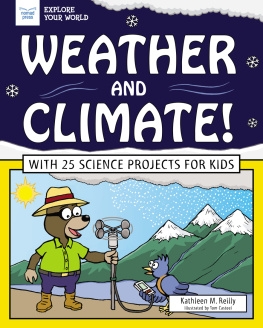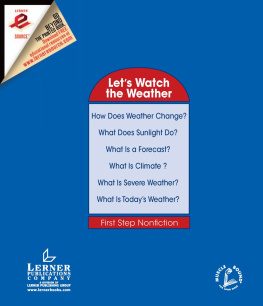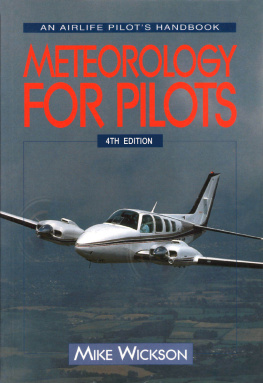This edition published in 1999 by
Airlife Publishing, an imprint of
The Crowood Press Ltd
Ramsbury, Marlborough
Wiltshire SW8 2HR
www.crowood.com
This e-book first published in 2015
This impression 2013
Copyright 1999 Brian Cosgrove
British Library Cataloguing-in-Publication Data
A catalogue record for this book is available from the British Library
ISBN 978 1 84037 027 0
All rights reserved. No part of this book may be reproduced or transmitted in any form or by any means, electronic or mechanical including photocopying, recording or by any information storage and retrieval system, without permission from the Publisher in writing.
The information in this book is true and complete to the best of our knowledge. All recommendations are made without any guarantee on the part of the Publisher, who also disclaims any liability incurred in connection with the use of this data or specific details.
Photo Credits
All photos by the author except the following:
Tom Bradbury
Julian Doswell
Terry Skuce
Jim Ellis
Dedication
To John Bannister, Julian Doswell and Peter Coles a truly patient trio.
C ONTENTS
CHAPTER 1
The Atmosphere
CHAPTER 2
Density
CHAPTER 3
Pressure
CHAPTER 4
The Altimeter
CHAPTER 5
Wind
CHAPTER 6
Effects of Wind on Flight
CHAPTER 7
Temperature
CHAPTER 8
Humidity
CHAPTER 9
Effect on Flight of the Basic Factors in the Atmosphere
CHAPTER 10
Lapse Rates
CHAPTER 11
Origin of Clouds
CHAPTER 12
Clouds
CHAPTER 13
Precipitation
CHAPTER 14
Icing
CHAPTER 15
The Cumulonimbus
CHAPTER 16
The Airmass
CHAPTER 17
Depressions
CHAPTER 18
Fronts
CHAPTER 19
Thunderstorms
CHAPTER 20
Haze, Mist and Fog
CHAPTER 21
The Anticyclone
CHAPTER 22
Visibility
CHAPTER 23
Reports/Forecasts
CHAPTER 24
Recap
CHAPTER 25
General Data
CHAPTER 26
Finale
I NTRODUCTION
Pilots Weather aims to provide the meteorological know-how needed by you as a student pilot and just maybe some existing pilots! It will be relevant whether your aircraft is a light aeroplane, sailplane, hang/para glider, ultralight, microlight, powered parachute or whatever.
Simplicity is the intention as far as possible; achieved through adopting a logical progression of the events to be absorbed and using numerous pictures of the clouds and weather patterns you will come across.
Past experience has shown that even at basic level there are a few whose curiosity likes to go that little bit deeper at the outset. Where such occasions arise, the text will be found in italics placed in a pink tinted box and can be ignored if your only wish is to learn the basics.
Should the day come when you want to extend your pilot status up to commercial or airline standard, or you wish to become a highly skilled sailplane pilot achieving a Gold C with diamonds, there are plenty of other books available to take you that stage further. In the meantime Pilots Weather will ensure you at least have a basic rock upon which to build the advanced knowledge that any future aspirations may demand.
Meteorological terminology and units of measurement are steadily becoming uniform internationally, but currently in the USA there are differences. For students resident or visiting the United States to learn to fly, every effort has been made to identify the major differences in terminology and procedures. Also, since the 1st January 1996 changes have been taking place particularly in the reporting of weather to become more in line with the international approach. To cover this transient period, terms will be duplicated in this book where necessary.
Apart from the basic principles of meteorology, the book highlights the weather problems with which you can be faced during your flying life it is not simply confined to your passing an examination.
You may become very competent in other aspects of flight, BUT can any of them be more crucial than a sound familiarity with the environment through which you are prepared to fly yourself and your passengers? When putting your knowledge of met into practice always err on the safe side and use the information available to you in the form of current reports and forecasts by phone, fax, radio or computer.
It is better to be on the ground wishing
you were in the air than in the air
wishing you were on the ground!
Brian Cosgrove
CHAPTER ONE
T HE A TMOSPHERE
Quite simply the atmosphere is the air surrounding our planet Earth mercifully kept in place by the force of gravity.
It is primarily composed of 78% nitrogen, 1% of other gases and, fortunately, 21% oxygen for which we should be truly grateful. Apart from life as we know it being unable to survive without oxygen, combustion would not be possible for engines to function.
As the force of gravity is greater nearest to its source, so the atmosphere is more concentrated near our planets surface.
There are four basic factors that affect the weather and flight.
They are:
DENSITY | the weight of a given volume of air. |
PRESSURE | the weight of a given column of air in the atmosphere. |
TEMPERATURE | the warmth of the atmosphere. |
HUMIDITY | the moisture content of the atmosphere. |
For occasions when uniformity or a working standard is required, the International Civil Aviation Organisation (ICAO) has agreed on an International Standard Atmosphere (ISA). This lays down standards for density, pressure and temperature based on a defined sea level more on this later.
You must remember that these standards are but a yardstick and they are purely theoretical. Rarely would the conditions in the atmosphere ever coincide with the standards all at the same time.
How these ISA standards play a part in aviation will be made clear as we progress.
CHAPTER TWO
D ENSITY
Air has weight, and density is simply the weight of the number of molecules of air present in a given parcel or volume of air at a given time. (The word parcel is frequently used in meteorology as no one has yet thought of a better alternative!)
Density is greatest at the surface; it decreases with height as the air thins out until in outer space it is no longer relevant.
Apart from a decrease with height, density is also affected by warmth. When a parcel of air of a given volume is heated it becomes thinner as the molecules spread out and their number becomes less than in the original parcel.
Conversely, when a volume of air is cooled it becomes denser.
Density also decreases as the moisture content in the air increases, but the effect is relatively minimal.
The ISA standard density at sea level (excepting the Dead Sea!) is 1.225 kilograms per cubic metre (or 1225 grams) or 0.764 lb per cubic foot, where density is defined as 100%. In other words, this would be the defined average weight of all the air molecules in a volume of one cubic metre of air at sea level.













